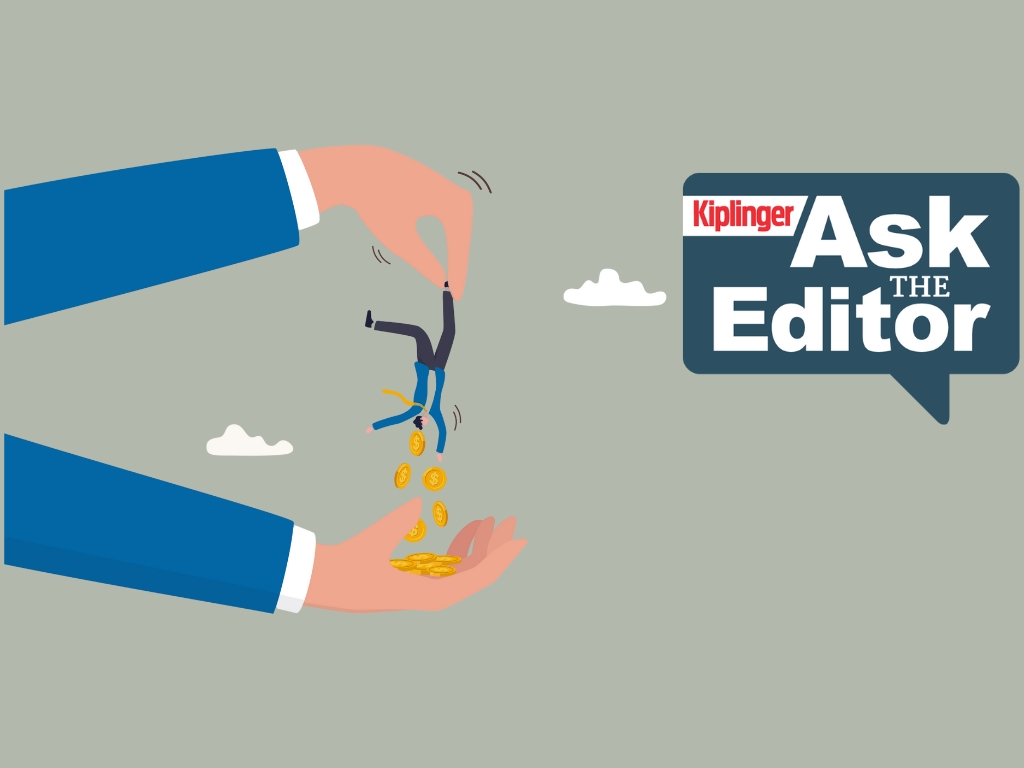PPP Tips: 6 Things to Discuss with Your Accountant Now
The Paycheck Protection Program keeps evolving. Here’s the latest on how small and midsize businesses should navigate the loan forgiveness twists and turns.


I feel for the owners of small and midsized businesses right now: They are like sailors facing headwinds and choppy waters of a very tough business environment with very little visibility, and the survival of their business at stake.
Many sought a lifeline in the Paycheck Protection Program (PPP) passed under the $2.2 trillion CARES Act earlier this year. But even as these forgivable loans may help keep businesses afloat and workers employed, the rules are in flux and ambiguous. Even specialist financial advisers are steering their clients as though navigating by the stars, rather than by precision GPS.
The banks providing the loans have asked recipients to hold off on submitting forgiveness applications, as even they try to come to terms with how it’s all supposed to work. So, if you are feeling anxious that you don’t quite understand how to get your loan forgiven, know you are not alone.
From just $107.88 $24.99 for Kiplinger Personal Finance
Become a smarter, better informed investor. Subscribe from just $107.88 $24.99, plus get up to 4 Special Issues

Sign up for Kiplinger’s Free Newsletters
Profit and prosper with the best of expert advice on investing, taxes, retirement, personal finance and more - straight to your e-mail.
Profit and prosper with the best of expert advice - straight to your e-mail.
Make sure you have a good tax or other financial adviser, who has experience in your particular industry. Here are some items to discuss with them:
1. PPP EZ: A simpler forgiveness filing
The most recent news is that the Small Business Administration has provided a simpler filing document for businesses that meet certain criteria. Ask your adviser about the PPP EZ forgiveness option if you are:
- A business owner with no employees.
- A business owner with multiple employees who did not reduce anyone's pay by more than 25%.
- A business owner with employees who did not have to reduce employee headcount during the pandemic or has restored the headcount by the time the forgiveness application is filed.
2. Loan repayment terms
The most recent revision by Congress was an effort to provide flexibility, but it can also put borrowers into some confusing positions. For instance, the new rules allow companies to win forgiveness of their loans if they can demonstrate that 60% of the loan was spent on payroll over 24 weeks, through Dec. 31, 2020. This was an expansion from the much shorter eight-week window in the rules previously.
This change was aimed at helping businesses like restaurants that are only starting to open now, providing them the time to pay workers and gain forgiveness. But it also can mean that those same businesses will be applying for forgiveness at the end of the new window, which puts them into next January. Meanwhile, many signed agreements with their banks before the new rules were issued, and those loan agreements may well stipulate that they need to start paying off the loan in November.
An act of Congress does not supersede a contract with your bank. If you need to take the entire loan window to achieve forgiveness, you may need to speak with your bank and get (in writing!) a waiver on paying the loan. Otherwise, you might be delinquent on repayment before your loan is even forgiven.
3. The loan forgiveness window
You can avoid the question about the loan repayment terms if you do not need the extended forgiveness window. Assuming you’ve been keeping your books in order — which I’ve been preaching since the moment CARES passed — you should be able to determine whether you need that extra time. If you don’t, then go ahead and apply for forgiveness. There’s no need to wait only to find more new rules and stipulations waiting ahead of you.
But if you find that you do need that extra window, then take advantage of it. Again, this will depend on the industry you’re in. Restaurants and gyms are coming online much more slowly than, say, law firms or marketers.
4. Your payroll-to-loan percentages
Now that only 60% of PPP funds need to be spent on payroll, as opposed to the original 75%, there’s more leeway for the businesses that need it. The question you have to ask, and ask honestly, is do you need that extra flexibility?
And while initially it was reported that the new 60% threshold came with a cliff — meaning if you didn’t hit the threshold you wouldn’t receive any forgiveness — the Small Business Administration and Treasury clarified recently that there would still be partial forgiveness under that threshold.
But beware: The law as written by Congress conflicts with this clarification provided by the SBA and Treasury. It’s murky, and this is where good advice is critical.
5. Consider whether you should take advantage of other PPP benefits
Under the latest updates, businesses that received PPP loans can now delay payment of payroll taxes, which they could not originally do under the CARES Act.
But remember that’s a delay, not forgiveness. You’re still going to have to pay that money back. As you work your way through your records, consult your adviser, and decide when to apply for forgiveness, consider whether you need to take advantage of all those benefits, or if you’ll be fine without them.
There’s no one-size-fits- all approach here. Just because the benefit is there doesn’t mean you should take it.
6. Your long-term business needs
Part of the anxiety I hear from clients around PPP is what happens if they don’t qualify for forgiveness? And this is something every business owner who received PPP loans should be thinking about.
But the reality is likely far less scary than what many are currently imagining.
As a business owner you likely already had a plan for the year, and even when the pandemic first hit, you started thinking about what you had to do to survive. In some cases, business owners made pivots that will allow them to be even stronger on the other side of this.
But you have to zoom out for a moment and think about not just what things look like after you apply for loan forgiveness, but what it looks like in 2021 and beyond.
If you do have to pay back any portion of your PPP loan, remember that it carries only 1% interest by law. You’ll never get a loan at that rate again at any point in history. Does taking advantage of every little PPP benefit help your business the most? You may find that the forgiveness of a low-interest loan should be secondary to critical personnel decisions you need to make. Hanging onto an underperforming employee just to win forgiveness, or keeping all employees when you could just treat some of your PPP funds as a loan and stretch your cash may still be a better business decision.
It can be helpful as well, in times of uncertainty to develop contingencies. Imagine at least three scenarios that could play out. Doing so will make the future less uncertain, give you a clear path forward, and help you decide how to manage your PPP loans.
Even as you consider these items, perhaps most importantly, you need to keep running your business. I’ve written about this before, and it still holds true: Don’t let the PPP specifics distract you from keeping your business afloat.
Let people like me, your tax and financial advisers, do the hard work.
While it’s important to ensure you have a base understanding of PPP and the latest updates, so that you can have intelligent conversations with your advisers, let the experts steer you through the PPP forgiveness effort. And remember that you aren’t alone in this.
Profit and prosper with the best of Kiplinger's advice on investing, taxes, retirement, personal finance and much more. Delivered daily. Enter your email in the box and click Sign Me Up.

Bruce Willey has been working with small to midsize businesses across the country for more than a decade, helping them navigate business and tax law in a variety of situations. His services include assisting with business start-ups, operations, growth, asset protection, exit planning and estate planning.
-
 Original Medicare vs Medicare Advantage Quiz: Which is Right for You?
Original Medicare vs Medicare Advantage Quiz: Which is Right for You?Quiz Take this quick quiz to discover your "Medicare Personality Type" and learn whether you are a Traditionalist, or a Bundler.
-
 Ask the Editor: Capital Gains and Tax Planning
Ask the Editor: Capital Gains and Tax PlanningAsk the Editor In this week's Ask the Editor Q&A, Joy Taylor answers questions on capital gains tax rates and end-of-year tax planning
-
 Time Is Running Out to Make the Best Tax Moves for 2025
Time Is Running Out to Make the Best Tax Moves for 2025Don't wait until January — investors, including those with a high net worth, can snag big tax savings for 2025 (and 2026) with these strategies.
-
 Time Is Running Out to Make the Best Moves to Save on Your 2025 Taxes
Time Is Running Out to Make the Best Moves to Save on Your 2025 TaxesDon't wait until January — investors, including those with a high net worth, can snag big tax savings for 2025 (and 2026) with these strategies.
-
 4 Smart Ways Retirees Can Give More to Charity, From a Financial Adviser
4 Smart Ways Retirees Can Give More to Charity, From a Financial AdviserFor retirees, tax efficiency and charitable giving should go hand in hand. After all, why not maximize your gifts and minimize the amount that goes to the IRS?
-
 I'm an Insurance Pro: If You Do One Boring Task Before the End of the Year, Make It This One (It Could Save You Thousands)
I'm an Insurance Pro: If You Do One Boring Task Before the End of the Year, Make It This One (It Could Save You Thousands)Who wants to check insurance policies when there's fun to be had? Still, making sure everything is up to date (coverage and deductibles) can save you a ton.
-
 3 Year-End Tax Strategies for Retirees With $2 Million to $10 Million
3 Year-End Tax Strategies for Retirees With $2 Million to $10 MillionTo avoid the OBBB messing up your whole tax strategy, get your Roth conversions and charitable bunching done by year's end.
-
 'Politics' Is a Dirty Word for Some Financial Advisers: 3 Reasons This Financial Planner Vehemently Disagrees
'Politics' Is a Dirty Word for Some Financial Advisers: 3 Reasons This Financial Planner Vehemently DisagreesYour financial plan should be aligned with your values and your politics. If your adviser refuses to talk about them, it's time to go elsewhere.
-
 For a Move Abroad, Choosing a Fiduciary Financial Planner Who Sees Both Sides of the Border Is Critical
For a Move Abroad, Choosing a Fiduciary Financial Planner Who Sees Both Sides of the Border Is CriticalWorking with a cross-border financial planner is essential to integrate tax, estate and visa considerations and avoid costly, unexpected liabilities.
-
 I'm a Financial Adviser: This Tax Trap Costs High Earners Thousands Each Year
I'm a Financial Adviser: This Tax Trap Costs High Earners Thousands Each YearMutual funds in taxable accounts can quietly erode your returns. More efficient tools, such as ETFs and direct indexing, can help improve after-tax returns.
-
 A Financial Adviser's Guide to Divorce Finalization: Tying Up the Loose Ends
A Financial Adviser's Guide to Divorce Finalization: Tying Up the Loose EndsAfter signing the divorce agreement, you'll need to tackle the administrative work that will allow you to start over.